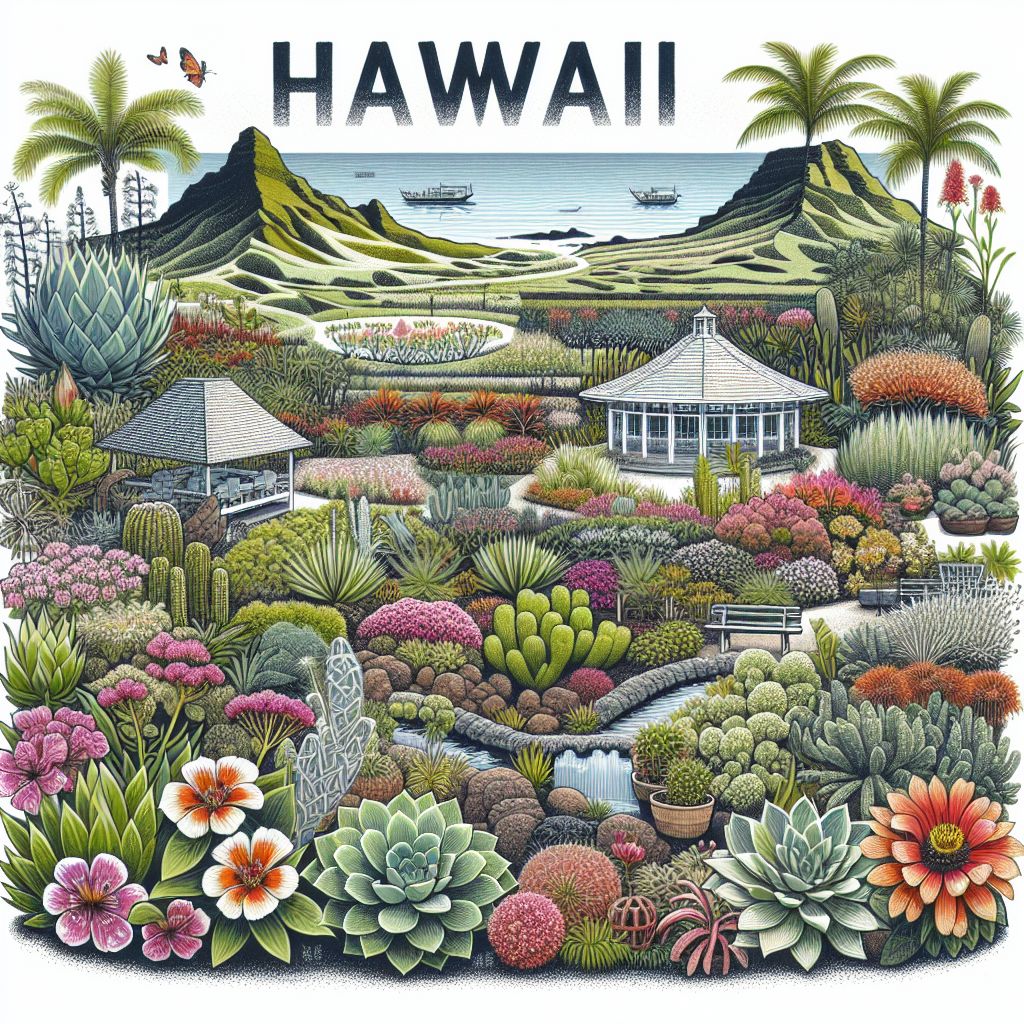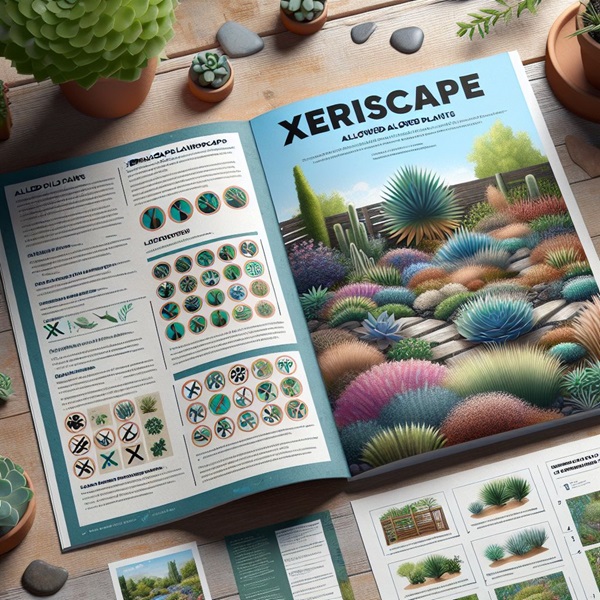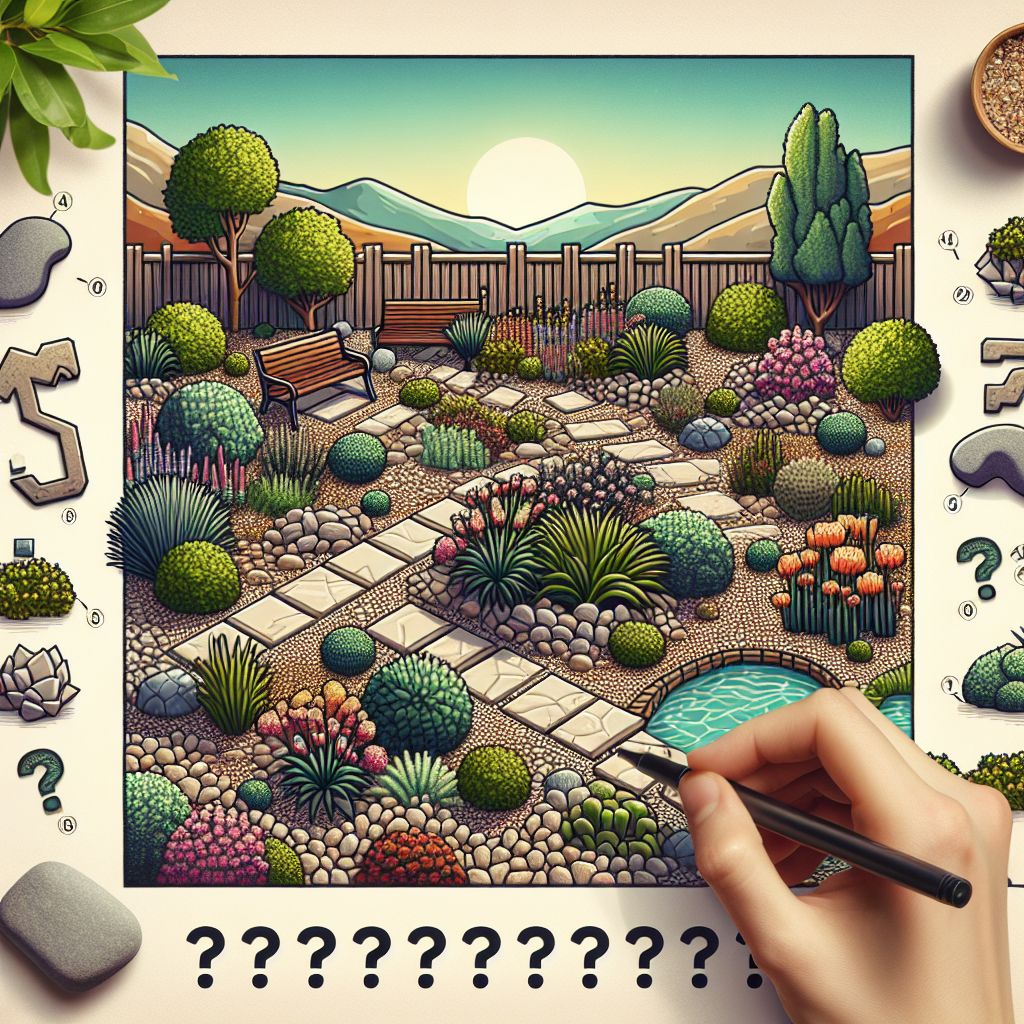
Article-at-a-Glance
- Discover the art of
with native Hawaiian plants for a stunning, low-maintenance front yard. - Learn about the benefits of native plants like ‘A’ali’i and Naupaka that thrive in Hawaii’s climate.
- Find out how to design a xeriscape layout that conserves water and supports local ecosystems.
- Get tips on choosing the right plants, efficient irrigation, and using local materials for your garden.
- Embrace the beauty and practicality of xeriscaping to create a garden that’s both sustainable and enchanting.
Embracing Xeriscaping in Hawaii
Imagine stepping outside to a vibrant garden that thrives in Hawaii’s unique climate without needing constant care or gallons of water. That’s the magic of xeriscaping. It’s not just a gardening trend; it’s a way of life for those who seek beauty and sustainability in their outdoor spaces. And in Hawaii, where the delicate balance of nature is paramount, xeriscaping with native plants is more than just practical—it’s a tribute to the island’s natural heritage.
The Philosophy of Water Conservation
Xeriscaping isn’t merely about choosing drought-resistant plants. It’s a holistic approach to gardening that reduces the need for water, maintenance, and resources. In Hawaii, where water is precious and conservation is key, xeriscaping is a smart choice for gardeners who want to preserve the islands’ resources while enjoying a lush, beautiful yard.
Why Go Native? The Benefits Explained
When you choose native Hawaiian plants for your xeriscape, you’re not just making a low-maintenance choice. You’re also supporting the local ecosystem, providing habitats for native wildlife, and reducing the risk of introducing invasive species. Native plants have evolved to thrive in Hawaii’s soil and climate conditions, making them the perfect candidates for a resilient, vibrant garden.
Most importantly, these plants have a symbiotic relationship with the local environment. They’re already adapted to Hawaii’s weather patterns, meaning they’ll flourish with minimal intervention. Besides that, they help to maintain the natural biodiversity of the region, which is crucial for a healthy ecosystem.
Choosing Your Green Ambassadors
Selecting the right plants is the cornerstone of a successful xeriscape. In Hawaii, this means opting for native species that are accustomed to the local climate and soil conditions. These plants are the true green ambassadors of your garden, representing the best of what the islands’ natural flora has to offer.
Here’s a brief guide to some of the native plants that make excellent choices for Hawaiian xeriscapes:
Shrubs That Stand Against the Heat
Shrubs are the backbone of any garden, providing structure and year-round interest. In a xeriscape, they’re also pivotal for creating shade and reducing soil erosion. Here are a few native Hawaiian shrubs that are as tough as they are beautiful:
‘A’ali’i (Dodonaea viscosa)
The ‘A’ali’i is a versatile shrub known for its hardiness in dry conditions. Its vibrant seed pods add a pop of color, and it’s an excellent choice for creating natural privacy screens or windbreaks.
Naio (Myoporum sandwicense)
Also known as the false sandalwood, Naio is prized for its wood’s fragrance and its shrub’s resilience. It’s perfect for coastal areas and can handle salty breezes with ease.
Kou (Cordia subcordata)
Kou trees were once revered by ancient Hawaiians for their beautiful wood, used in crafting traditional utensils. As a xeriscape plant, Kou offers broad, heart-shaped leaves and a tolerance for seaside conditions.
Persistent Perennials and Groundcovers
Besides shrubs, a successful xeriscape includes a variety of perennials and groundcovers. These plants fill in the gaps, creating a lush tapestry that suppresses weeds and retains soil moisture. They’re the perfect low-growing companions to your taller shrubs and trees.
Stay tuned as we dive deeper into the world of xeriscaping in Hawaii, revealing the best native plants to create a sustainable, low-maintenance paradise right in your front yard.

Designing with Purpose
Crafting a Xeriscape Layout That Thrives
Designing a xeriscape starts with understanding your space. Assess your front yard’s sun exposure, wind patterns, and soil type. A well-thought-out design groups plants with similar water needs together, creating ‘hydrozones’. This ensures that each plant gets just the right amount of water, without waste. Consider the mature size of plants to avoid overcrowding and competition for resources. Create paths and spaces that invite you to wander, reflect, and enjoy the fruits of your labor.
Irrigation Strategies for Water Efficiency
Efficient watering is key in xeriscaping. Drip irrigation systems are ideal because they deliver water directly to the plant’s roots, minimizing evaporation and runoff. If you’re using sprinklers, water early in the morning when temperatures are cooler. Remember, deep and infrequent watering encourages plants to develop deep root systems, making them more drought-tolerant and resilient.
The Role of Mulch in Your Ecosystem
Mulch is a xeriscaper’s best friend. It keeps the soil cool and moist, discourages weeds, and adds organic matter as it breaks down. Opt for locally sourced mulch, like shredded coconut husks or macadamia nut shells, which not only serve the purpose but also reduce your carbon footprint. For more information on eco-friendly gardening practices, check out our guide on Dallas eco-friendly gardening.
Local Treasures for Your Front Yard
Flowers That Charm Pollinators and Neighbors Alike
Flowers are the jewels of the garden, and in a xeriscape, they play a crucial role in attracting pollinators. Native Hawaiian flowers are particularly adept at luring in local bees, butterflies, and birds, creating a vibrant ecosystem right in your front yard.
‘Ōhi’a Lehua (Metrosideros polymorpha)
The ‘Ōhi’a Lehua is not only stunning, with its pom-pom-like red flowers, but it’s also deeply rooted in Hawaiian culture. This tree is the epitome of resilience, often being the first plant to grow on fresh lava flows.
Ilima (Sida fallax)
Known as the flower of Oahu, Ilima blooms with small, cup-shaped flowers that range from golden to orange hues. It’s a hardy groundcover that adds a splash of color and requires minimal care.
Utilizing Volcanic Rocks and Local Materials
Incorporating local materials like volcanic rocks into your xeriscape not only reflects Hawaii’s unique landscape but also reduces the need for imported goods. These rocks can be used for paths, borders, and even as artistic elements within the garden.
Example: A xeriscape path lined with smooth, dark volcanic rocks leads to a seating area surrounded by native ‘Ōhi’a Lehua trees and Ilima groundcovers. It’s a sustainable, picturesque setting that celebrates the local environment.
Low-Maintenance Care for Your Xeriscape
Optimal Seasonal Practices
Even low-maintenance gardens need some TLC. In the rainy season, collect and store water for drier months. Prune your plants to encourage healthy growth and to maintain the desired shape. Check your irrigation system regularly to ensure it’s functioning efficiently.
Managing Pests and Problems the Natural Way
Pests can be a challenge, but in a balanced xeriscape, natural predators often keep them in check. Encourage beneficial insects by planting a variety of species that flower at different times. If you do encounter a problem, opt for organic solutions like neem oil or insecticidal soap before reaching for harsh chemicals.
Xeriscaping Plants for Hawaii’s Climate
Choosing the right plants is crucial for a successful xeriscape in Hawaii. Here’s a quick reference table to help you select plants that are well-suited to the island’s diverse microclimates:
| Plant Name | Water Needs | Preferred Exposure | Benefits |
|---|---|---|---|
| ‘A’ali’i (Dodonaea viscosa) | Low | Full sun to partial shade | Drought-tolerant, attractive seed pods 1 2 |
| Naupaka (Scaevola taccada) | Low | Full sun | Salt-tolerant, ideal for coastal areas 1 3 4 |
| Kou (Cordia subcordata) | Low to moderate | Full sun | Historical significance, broad leaves 1 4 |
| ‘Ōhi’a Lehua (Metrosideros polymorpha) | Low to moderate | Full sun to partial shade | Attracts pollinators, culturally significant 1 2 4 |
| Ilima (Sida fallax) | Low | Full sun | Beautiful flowers, groundcover 1 3 4 |

Frequently Asked Questions
What Are the Best Native Shrubs for Hawaiian Xeriscapes?
The best native shrubs for Hawaiian xeriscapes include ‘A’ali’i, Naupaka, and Kou, among others. These shrubs are adapted to Hawaii’s climate and offer various benefits such as drought tolerance, salt tolerance, and attractive foliage or flowers.
How Do You Design a Xeriscape for Hawaii’s Unique Climate?
To design a xeriscape for Hawaii’s climate, assess your yard’s conditions, group plants with similar water needs, use efficient irrigation methods like drip systems, and incorporate local materials like volcanic rocks. Also, plan for diverse plant species to support local wildlife. For more insights, consider exploring The Water-Wise Garden recommendations tailored for Hawaiian homes.
Design with intention, considering both aesthetics and functionality. Your xeriscape should be a reflection of the natural beauty of Hawaii while being a practical, water-conserving space.
Which Native Hawaiian Flowers Require the Least Water?
Native Hawaiian flowers like ‘Ōhi’a Lehua and Ilima require minimal water once established. These species are well-adapted to the local environment and can thrive with natural rainfall in most areas of Hawaii.
What Materials Should Be Used for Hawaiian Xeriscape Mulching?
For mulching in a Hawaiian xeriscape, use locally sourced materials such as shredded coconut husks, macadamia nut shells, or leaf litter. These materials are readily available, environmentally friendly, and contribute to the health of your garden’s ecosystem.
Can Xeriscaping Really Save Water in Hawaii?
Absolutely, xeriscaping can significantly reduce water usage in Hawaiian gardens. By selecting drought-resistant native plants and implementing efficient watering practices, you can create a landscape that thrives with much less water than a traditional garden.




Leave a Reply